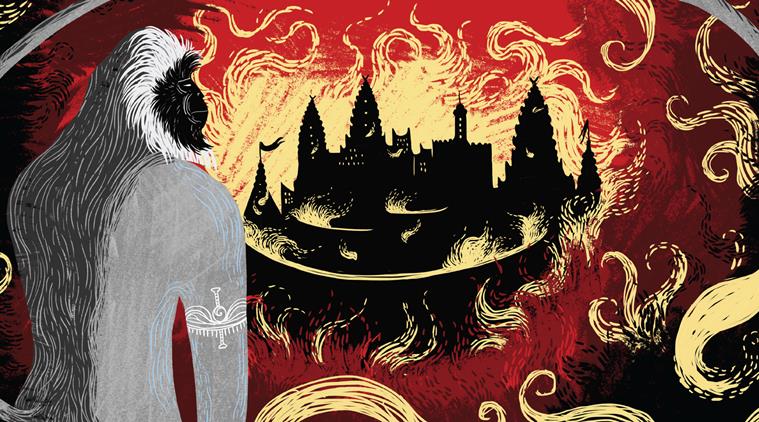- India
- International
‘I’m not one of those who think this is a triumphal epic’
Arshia Sattar on her Ramayana for children, and why the little ones will find the answers to questions of misogyny and violence themselves.
 Arshia Sattar believes Ramayana is a good story for children.
Arshia Sattar believes Ramayana is a good story for children.
When did you first read/hear the Ramayana? Were you a child? And how did you choose to make it a big part of your life’s work?
Yes, I heard it as a child, like so many other Indians. I never intended to make it my life’s work. It just happened. I found that it had more and more to say to me and I had more and more to say about it.
I started to study Sanskrit Ramayana formally in 1986 and wrote my PhD dissertation on Hanuman. I’d already been working with various English translations, but once I got to Sanskrit, I never really left it.
Why is Ramayana a good story for children? Did you edit out a few bits, keeping in mind their age?
I edited for length, obviously, but not for content. It’s a great story for children — kings and queens and noble princes and beautiful princesses, flying monkeys, 10-headed demons. Everything a child could ask for is in there. And it’s also about family and how to be a good person.
How does one read the Ramayana to children today — how does one explain its violence, its othering of rakshasas, the destruction of Lanka, attitudes to women?
One doesn’t have to explain any of these things to children. We have to trust that children are entirely capable of seeing what is right and what is wrong. They’ll come to notions of “othering” and misogyny when they are older. Rather than change our stories, we need to change social attitudes so that children can make these distinctions naturally and easily.
Why did Ram subject Sita to agni pariksha, and later banish her? That is a question children will and do ask.
I’ve written a whole book on why Ram did what he did and how we, as 21st century men and women, might understand that. Of course, that book is not for children. A lovely 10-year-old who talked to me about my book last week said that the only thing he would change in the story is Sita’s banishment — he didn’t want her to be sent away. He didn’t ask the question, he had the answer. Maybe, if children ask an adult the question of why Ram did what he did, we can turn the question around and ask them why they think it happened. I’m sure they’ll have unexpected answers.

Having been told and retold so many times, do you think there are aspects of the Ramayana story we need to see afresh? For instance, I wondered if Sita’s decision to go with Ram to the forest was an ordinary one.
I’ve spent 30 years with the same text — obviously, there’s a lot in it that I find fresh and exciting and challenging and enjoyable. There are so many ways to think about Sita and her actions and decisions — and people have thought about these things for centuries. That’s why we have so many Ramayanas. We’re always asking the Ramayana to respond to us in our times.
After the victory over Ravana, the epic seems to become more melancholy. Is this really a triumphalist story?
Yes, it is very sad at the end. That’s because Ram is sad, he’s lost his beloved wife forever and the pressures of kingship are not easy. I’m sure there are people who think this is a triumphal story but I’m not one them. That’s the beauty of the Ramayana, there’s something in it for everyone.
Which is your favourite part of the epic?
Kishkindha, but also Sundara Kanda. In Valmiki, the language and images in that part of the text are exquisite and you see Lanka as a truly lush and sophisticated city. But I also like Aranya Kanda, with all the magic and danger. I like Ayodhya Kanda because of the human relationships. I guess I just love the whole text.
Sattar’s Ramayana is published by Juggernaut.
Must Read
Apr 23: Latest News
- 01
- 02
- 03
- 04
- 05


































